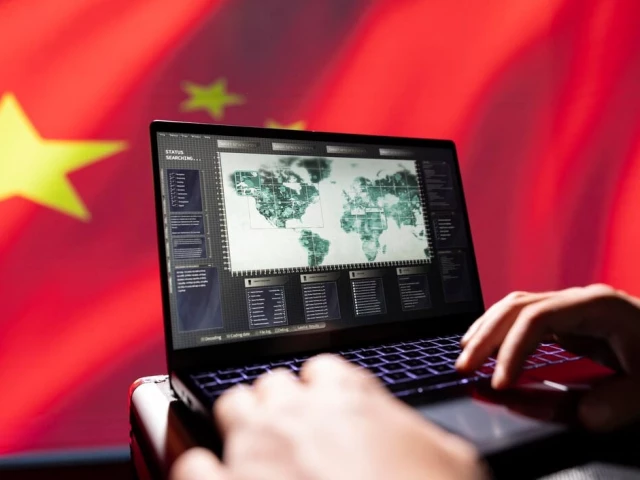Importing China model beyond CPEC
Hustle culture, grassroots entrepreneurial spirit transformed $18.7tr economy

The vibrant, chaotic energy of a Chinese market provides perhaps the most authentic economics lesson one could ever experience. In these bustling spaces, the very DNA of China's economic transformation reveals itself through thousands of daily interactions.
Consider a typical scene; under the glow of red lanterns in a Beijing market, a vendor enthusiastically quotes 1000 RMB for a handcrafted souvenir. A curious tourist, participating in this familiar ritual, counters with 200 RMB. What follows is not confrontation but a dance, a persistent, good-natured negotiation culminating in a handshake, genuine smiles, and a successful sale at 250 RMB.
This micro-transaction embodies a monumental truth; China's historic economic miracle springs from an unwavering, collective determination to seize every opportunity, no matter how small. This relentless national hustle, echoing from cramped street stalls to soaring corporate headquarters, has elevated hundreds of millions from poverty and now offers powerful lessons for developing nations.
This ingrained commercial mentality represents a fundamental characteristic woven throughout Chinese society. It's a mindset forged through decades of rapid transformation where seizing initiative became essential for survival and prosperity. Throughout commercial districts, from Beijing's glittering Wangfujing to Guangzhou's wholesale markets, one observes the same remarkable determination. Shopkeepers don't passively await customers; they actively engage them, proudly showcase their merchandise, and might even pursue a hesitant buyer to make one final persuasive offer. This behaviour stems not from desperation but from a profound eagerness to trade, connect, and succeed. It reflects the understanding that every human interaction contains potential for growth and opportunity.
China's extraordinary manufacturing capability provides the foundation enabling this entrepreneurial spirit. The nation's unique capacity to serve virtually every market segment means there is always something to offer. China simultaneously produces cutting-edge innovations like 5G infrastructure, electric vehicles, and quantum computing technology while manufacturing affordable alternatives for budget-conscious consumers. This remarkable dual-capacity ensures that no customer, be it a billionaire industrialist or a thrifty student, leaves empty-handed. The sheer diversity of available products creates staggering possibilities for commerce at every level across global markets.
This determined drive surpasses local markets to define China's international economic presence. Chinese corporations, tempered through intense domestic competition, now aggressively pursue business across all continents. They are renowned for their proactive approaches; diligently seeking contacts, meticulously analysing market information, and persistently pursuing leads that might unlock new international opportunities. A casual meeting at a conference can yield formal proposals within days. Simple inquiries about local industries can generate customised catalogues and manufacturing samples. This global ambition essentially represents the street-market bargaining mentality elevated to a multinational, billion-dollar scale, a steadfast refusal to accept rejection and a fundamental belief that any door will open with sufficient persistence and value proposition.
This remarkable commercial energy receives strategic support through a development model ensuring no region gets left behind. The Chinese government functions as a systematic growth catalyst, identifying unique local advantages, whether Hunan's agriculture, Inner Mongolia's livestock, or Guizhou's emerging tech hubs, and providing necessary resources, infrastructure, and capital to transform them into modern competitive industries. This decentralised approach has successfully converted each province into its own growth engine. Consider Guangdong province, often called "the world's factory," which boasts a colossal GDP of around $2 trillion. As an independent nation, it would rank among the world's top fifteen economies, representing a substantial portion of China's overall $18.74 trillion GDP. Similar success stories emerge from Zhejiang, Jiangsu, and other regions demonstrating this targeted growth strategy.
But behind this massive economic engine is not just a miracle, it is a nationally mobilised workforce operating on the principle that every citizen contributes to development. The most transformative change has been the deliberate economic empowerment of women, particularly visible in rural areas. Women previously excluded from formal economic systems, many unfamiliar with basic banking, now lead a grassroots e-commerce revolution. Through different e-commerce platforms, they build thriving businesses marketing local specialties, directly from their villages to national and global audiences. These women evolve beyond participants into community leaders, entrepreneurs, and primary architects of family prosperity, fundamentally revitalising rural economies from within.
This comprehensive mobilisation has established a powerful self-sustaining economic cycle. Dramatically rising personal incomes have transformed China's population into one of the world's most formidable consumer markets. Booming sectors like electric vehicles, smart appliances, and tourism no longer depend primarily on exports but are driven by the vast purchasing power of hundreds of millions of newly prosperous domestic consumers. This internal consumption engine provides crucial insulation against global market fluctuations while creating a virtuous cycle wherein Chinese companies can innovate, test, and scale products domestically before international expansion.
For partner nations like Pakistan, currently navigating development challenges through initiatives like the China-Pakistan Economic Corridor (CPEC), the Chinese model offers practical blueprints beyond inspiration. CPEC's next phase must look beyond physical infrastructure to spark similar entrepreneurial and industrial revolutions within Pakistan itself. This requires meticulously identifying and investing in indigenous resources across all provinces, like Punjab's agricultural potential, Balochistan's mineral wealth, Sindh's maritime resources, and Khyber-Pakhtunkhwa's tourism possibilities, while providing targeted policy support, credit access, and technical training to transform these advantages into competitive modern industries.
Ultimately, Pakistan must embrace the most crucial element of China's success, its cultural engine. The real lesson lies in fostering a national culture that genuinely celebrates business acumen, respectful negotiation, and relentless opportunity-seeking. It requires fully empowering all population segments, particularly women and youth, to participate in the formal economy, thereby unlocking currently underutilised potential.
China's story demonstrates that while capital and policy remain essential, true economic miracles emerge from collective determination and unwavering persistence. For Pakistan, embracing and cultivating this same resilient, can-do spirit may represent the most valuable and enduring import of all.



















COMMENTS
Comments are moderated and generally will be posted if they are on-topic and not abusive.
For more information, please see our Comments FAQ